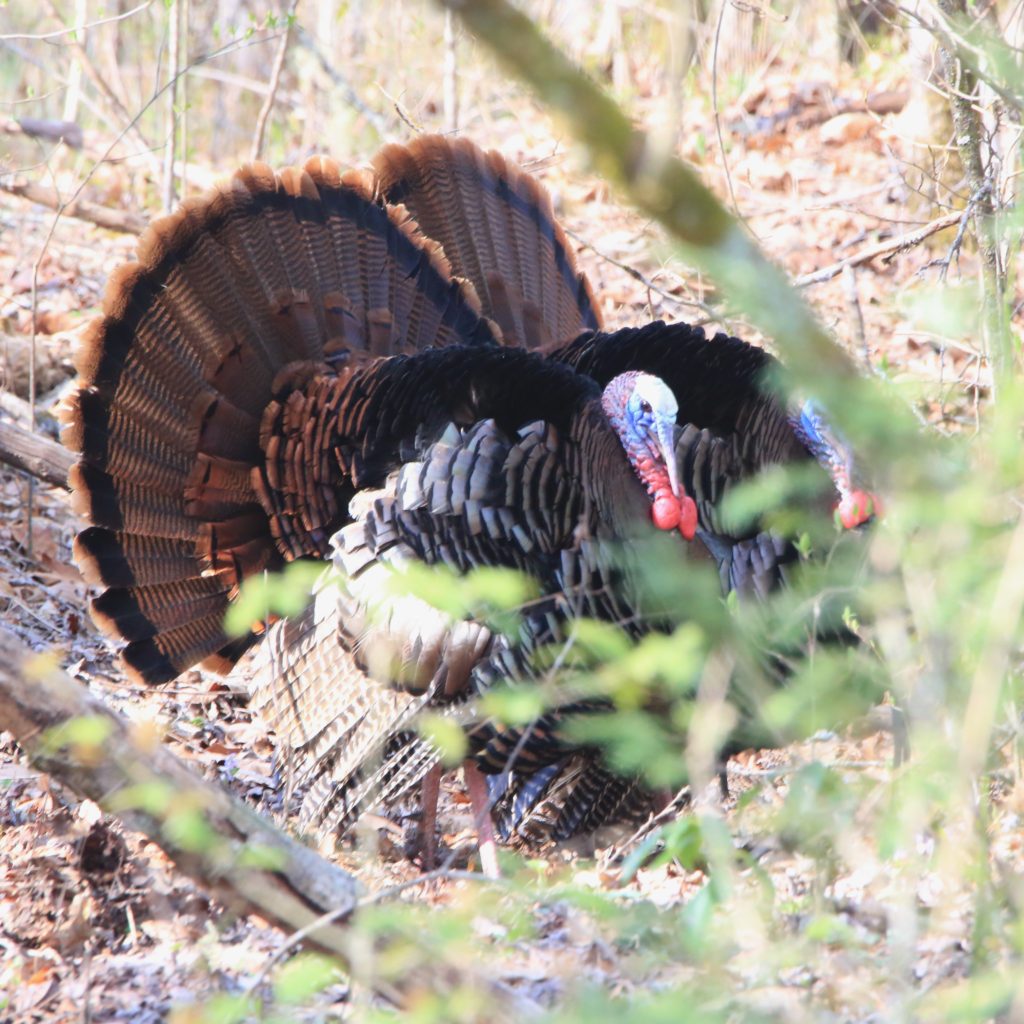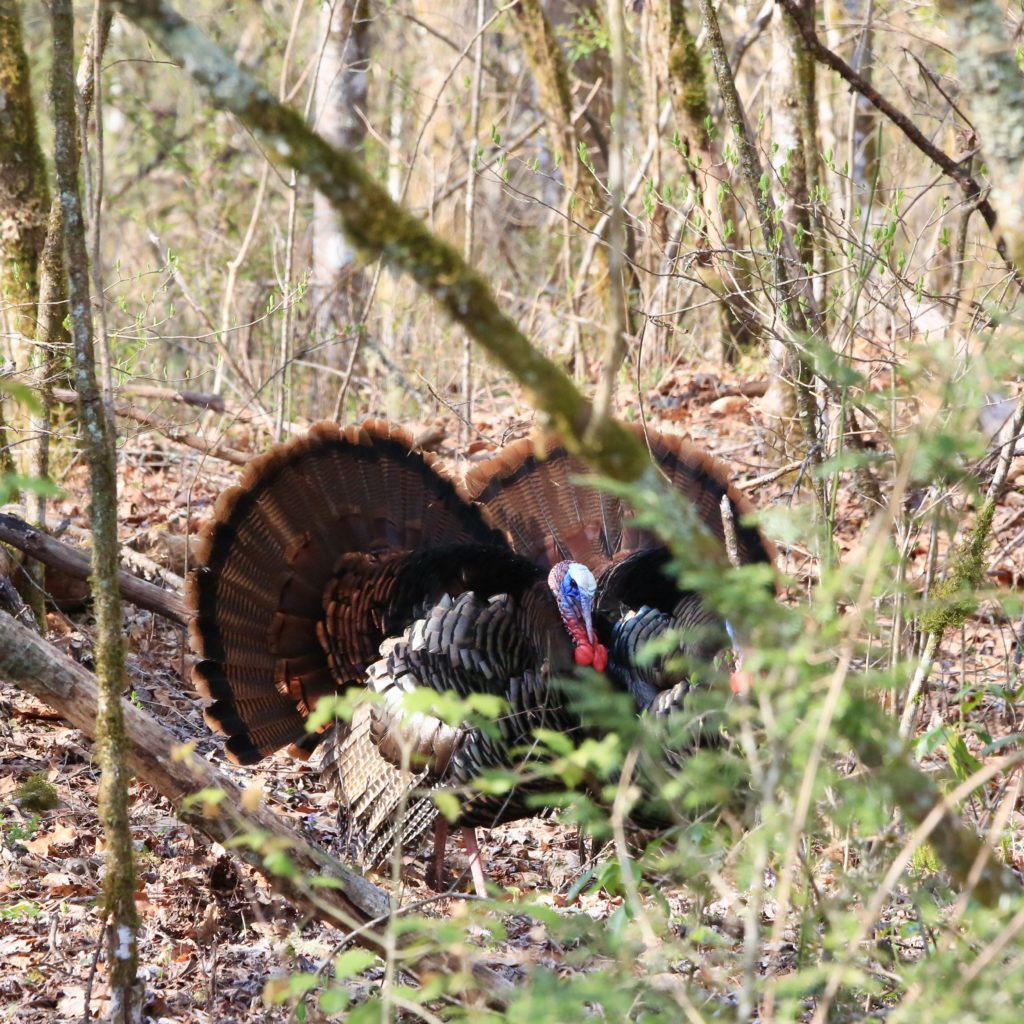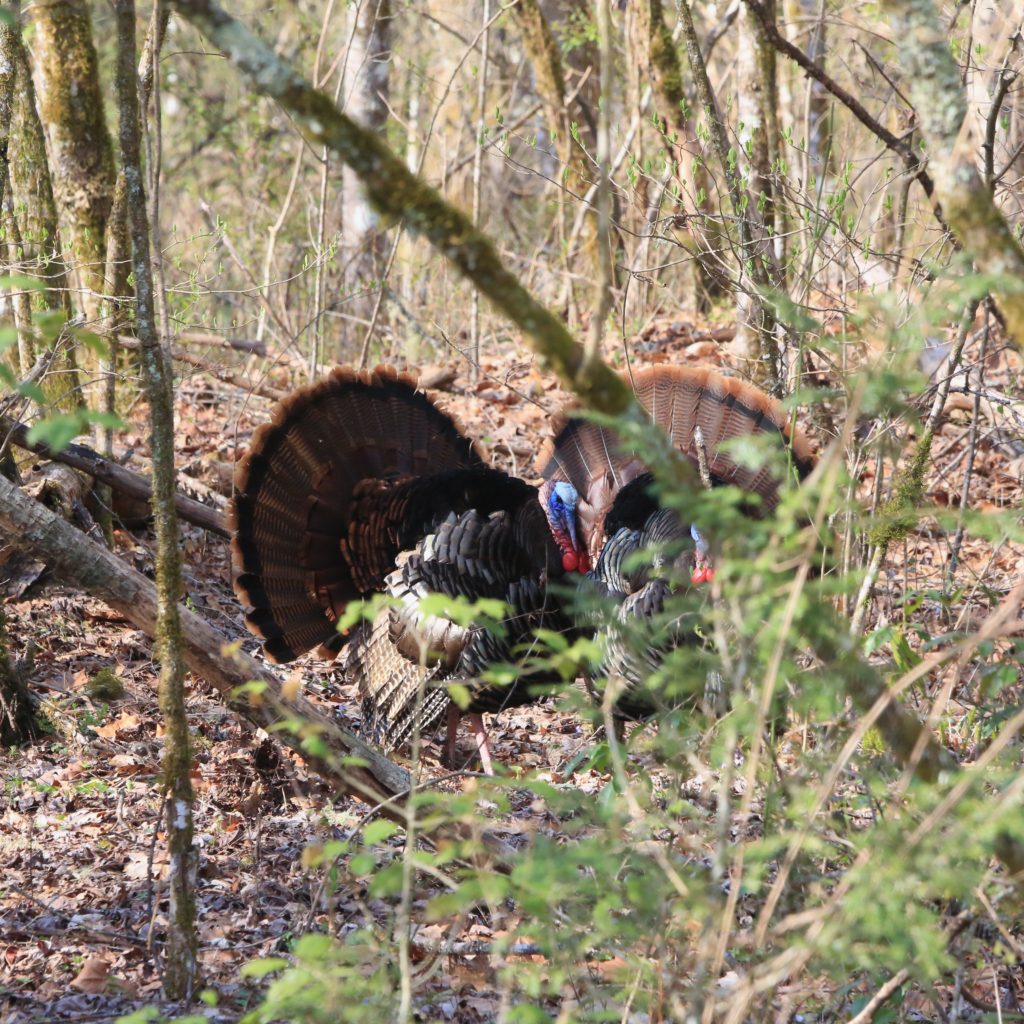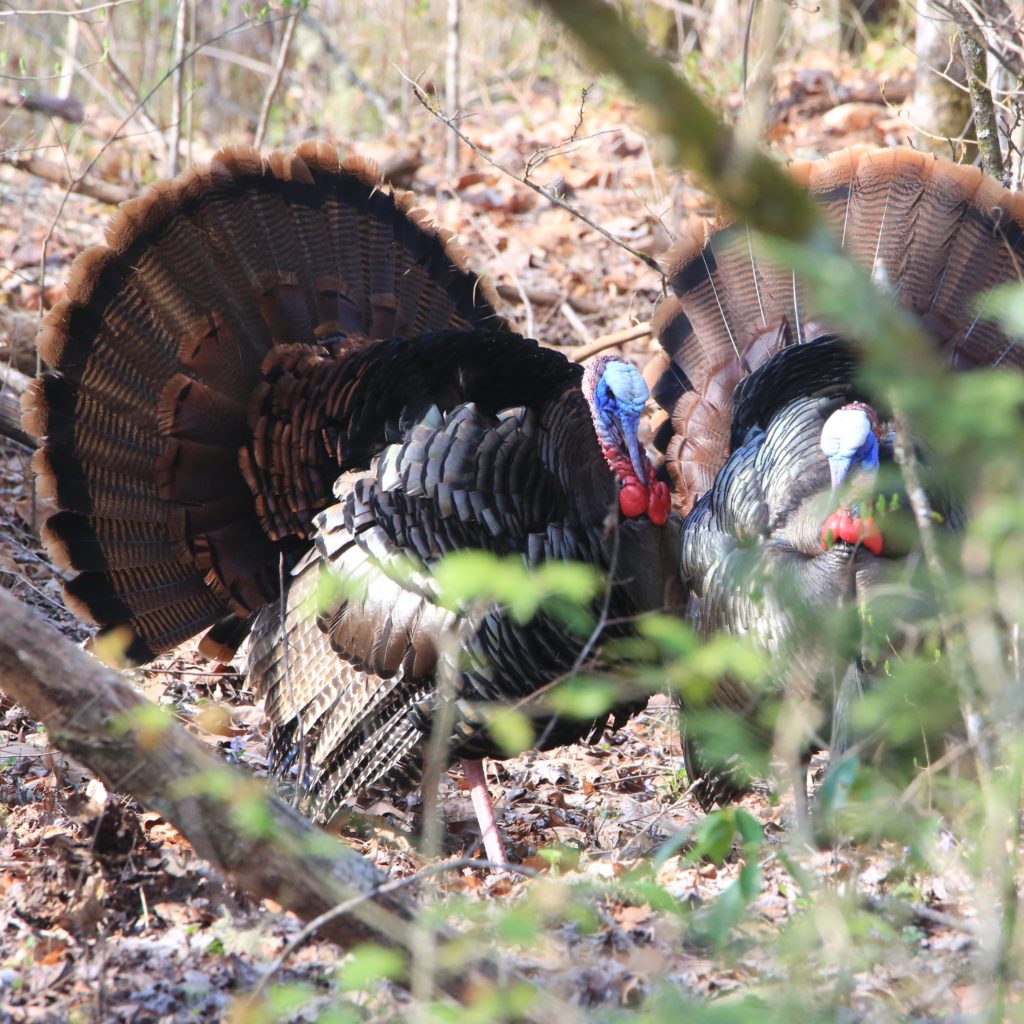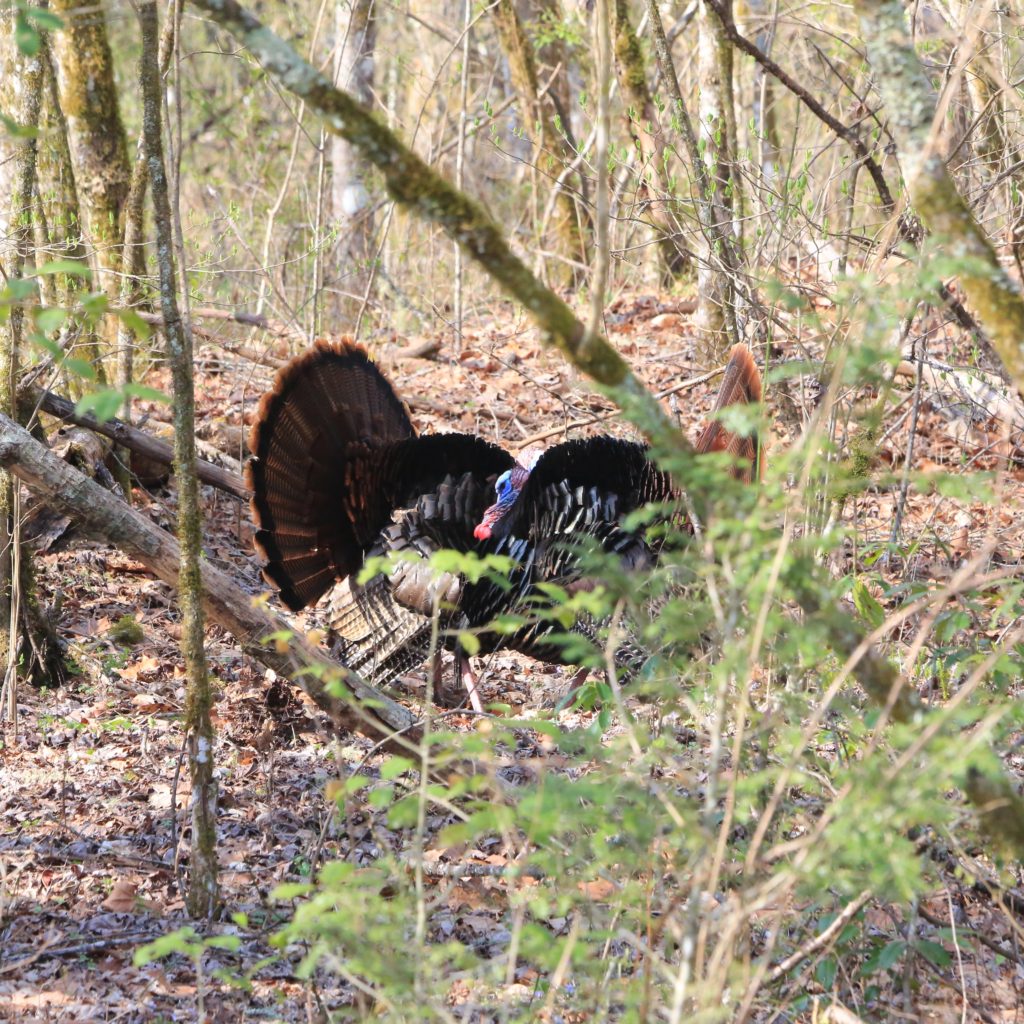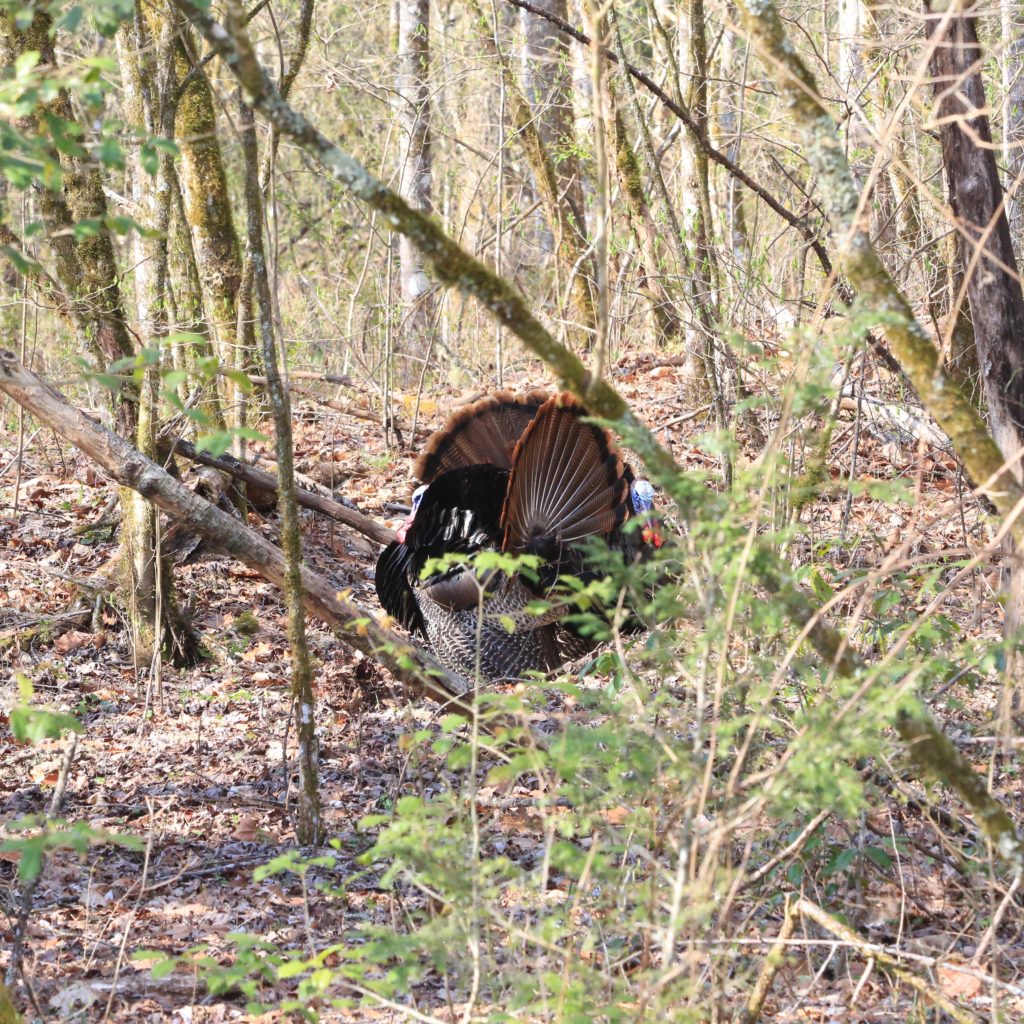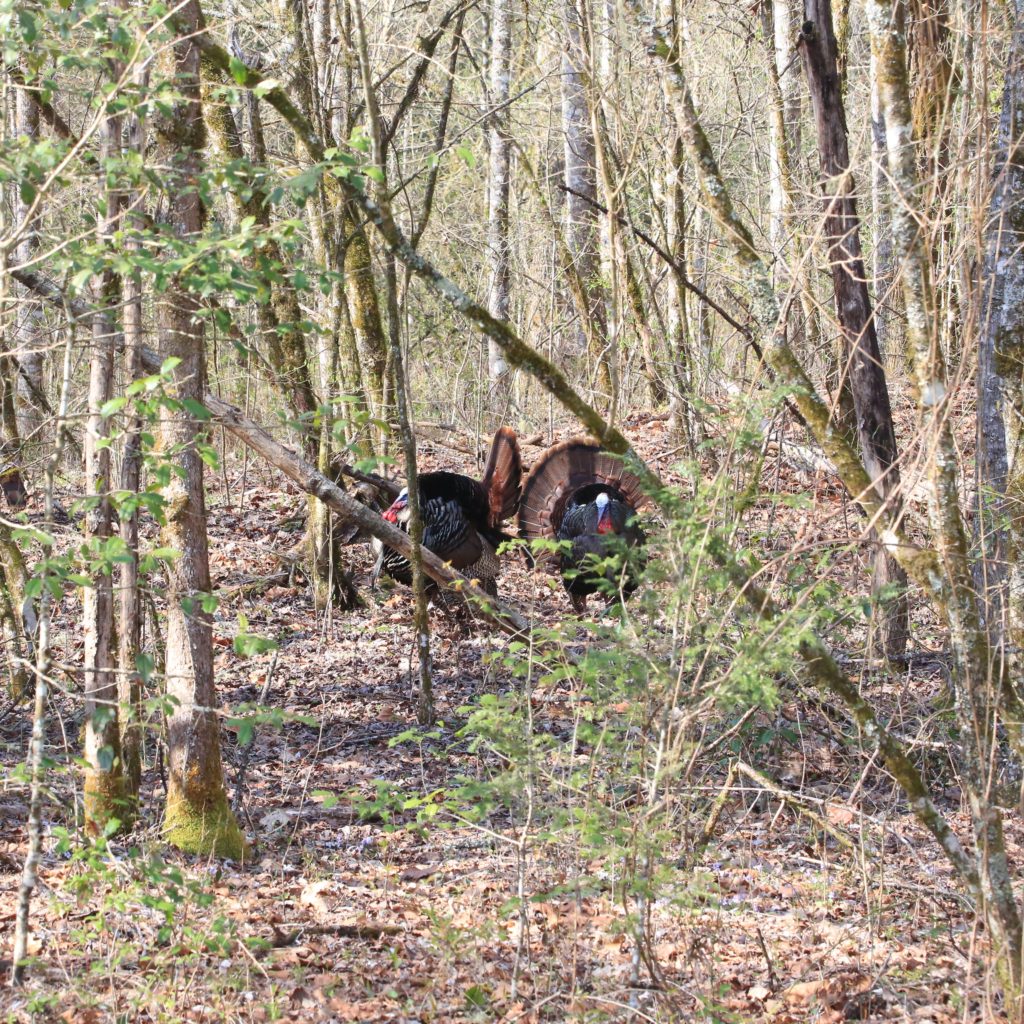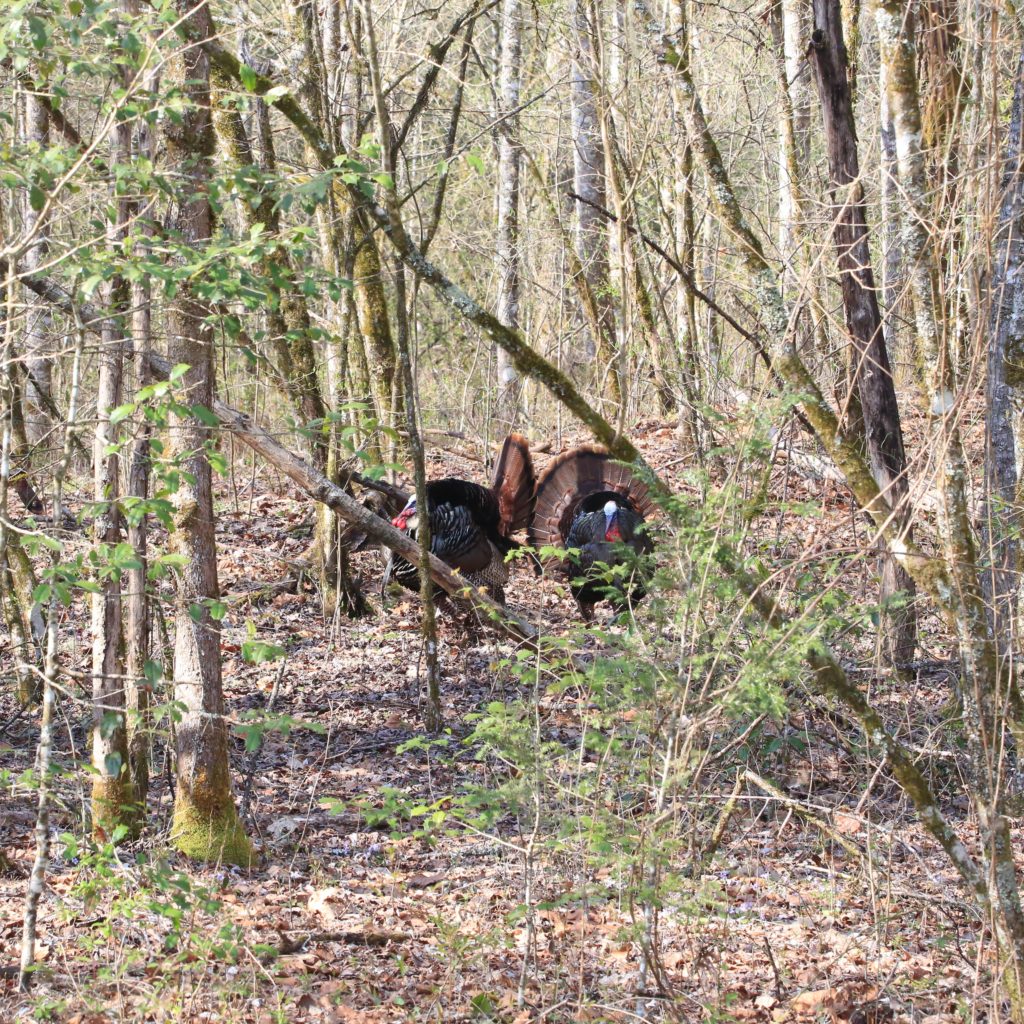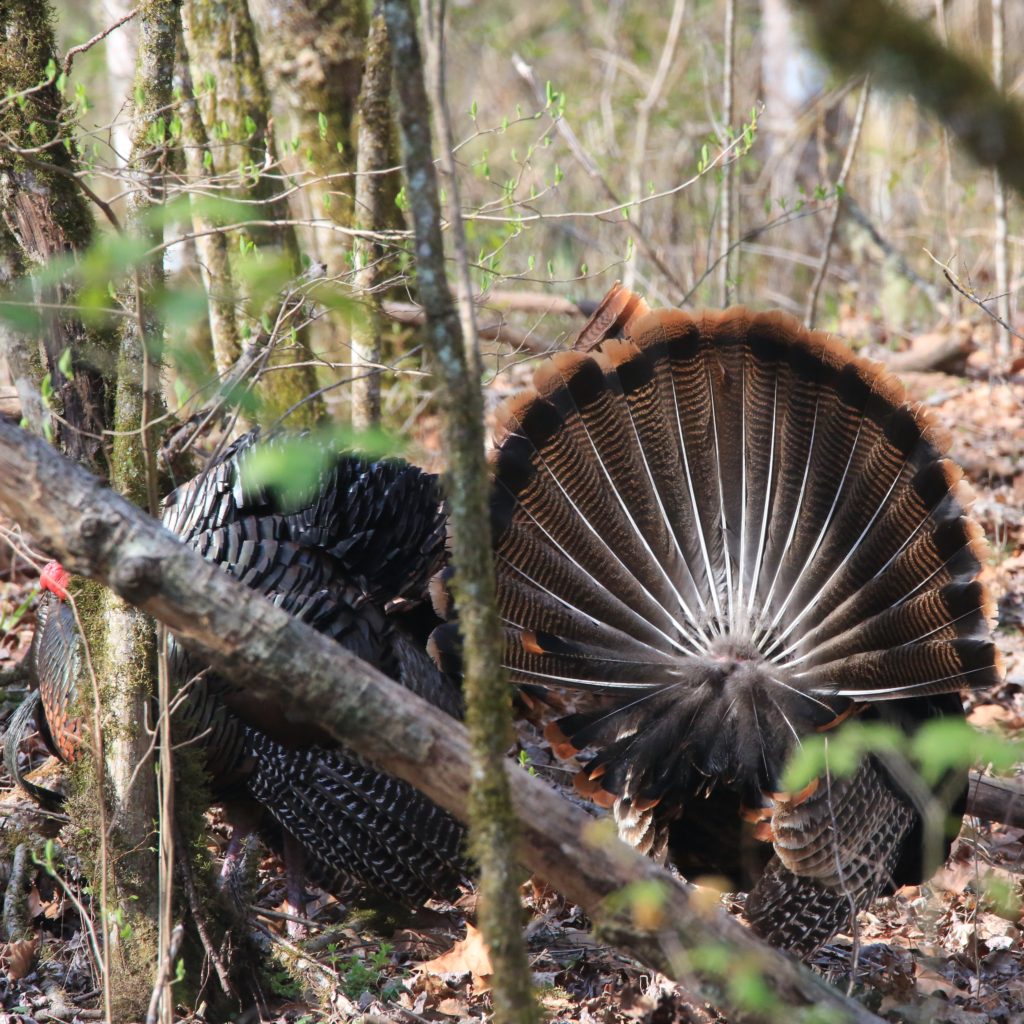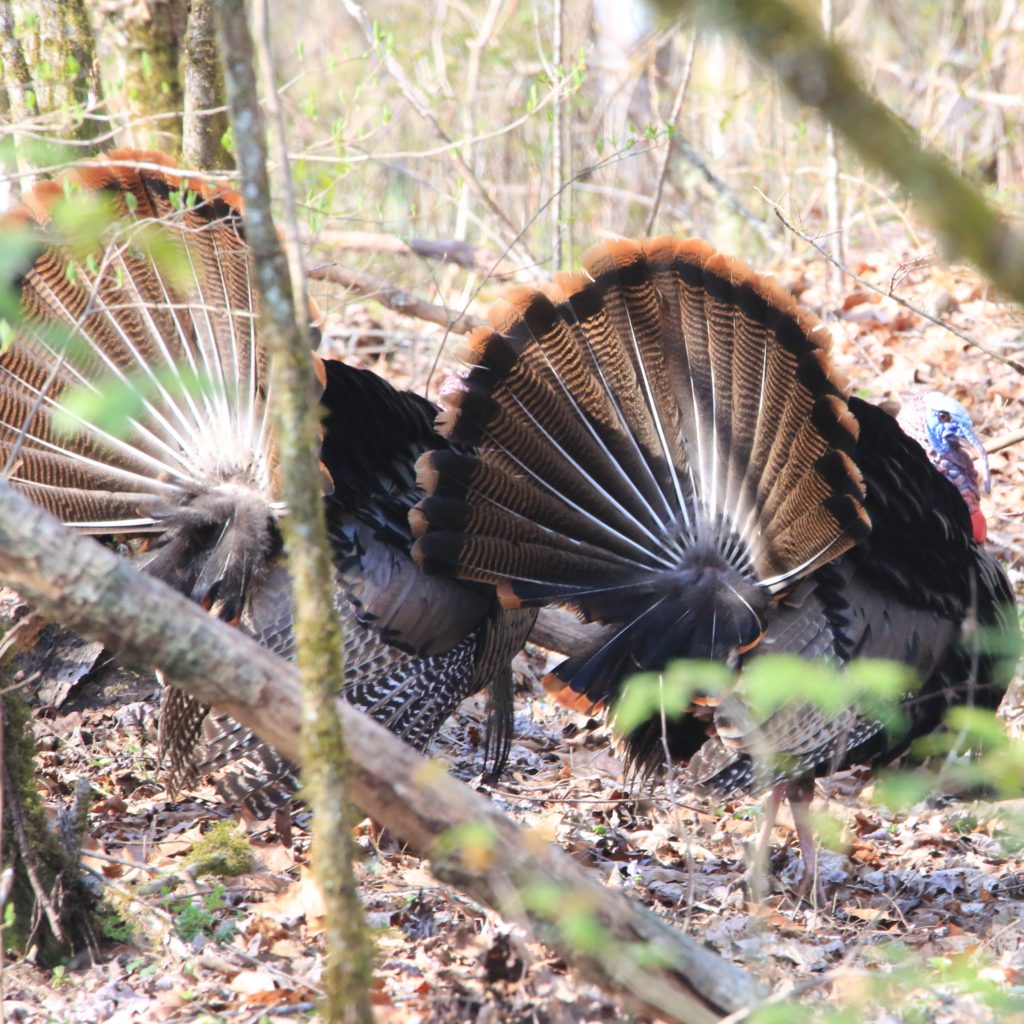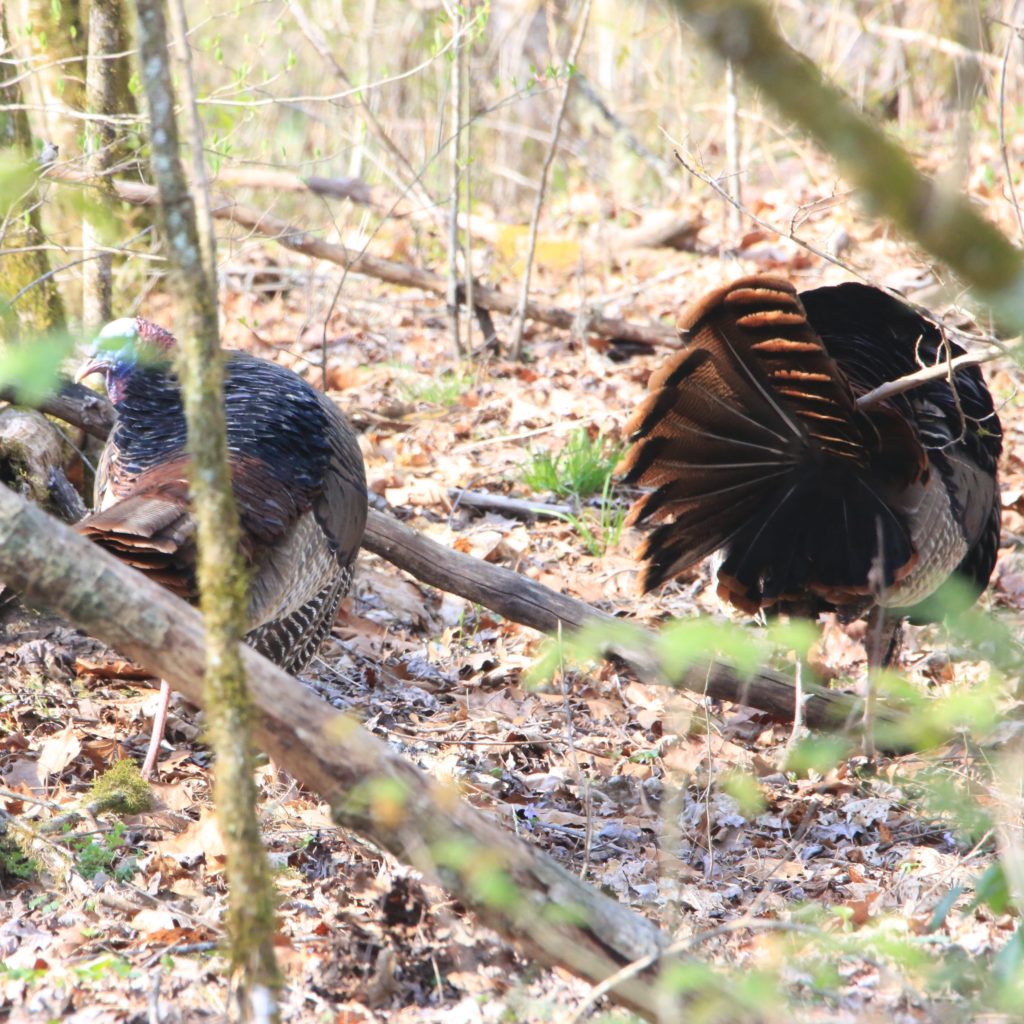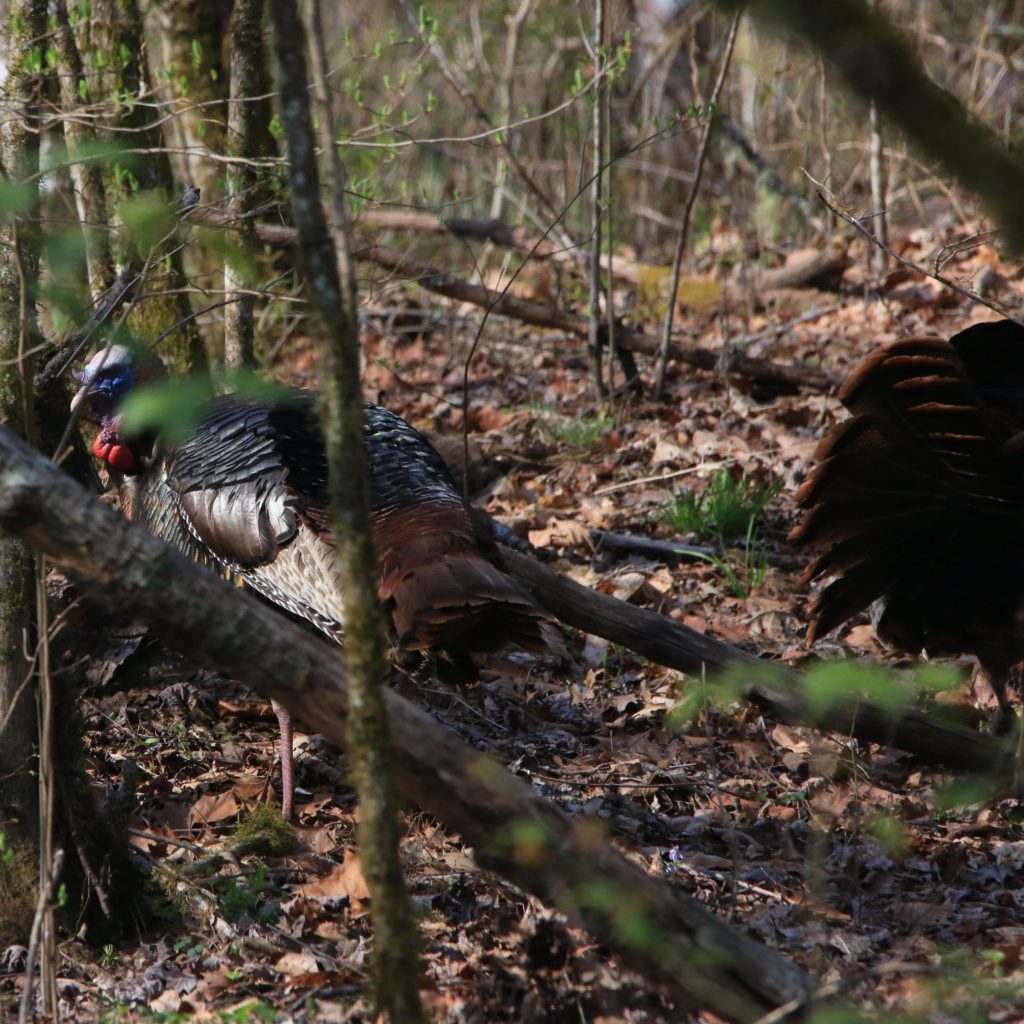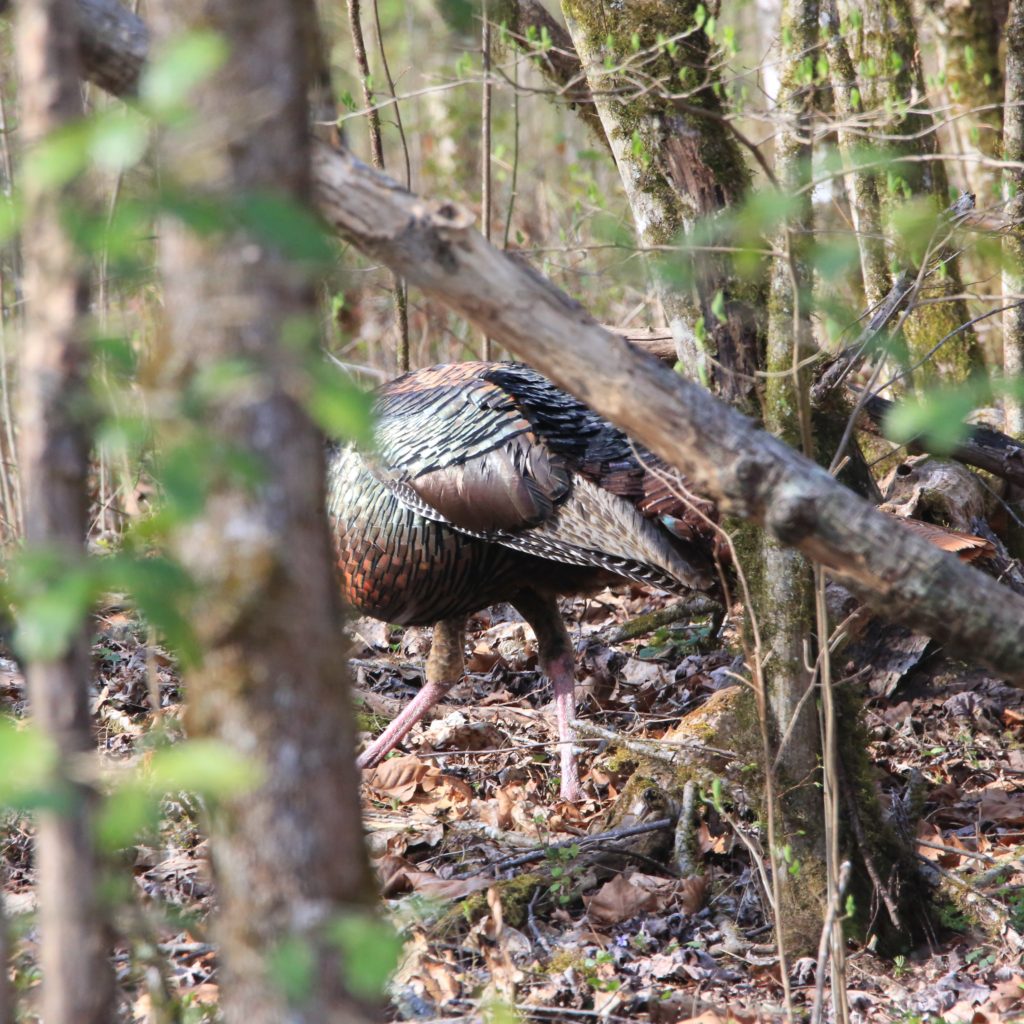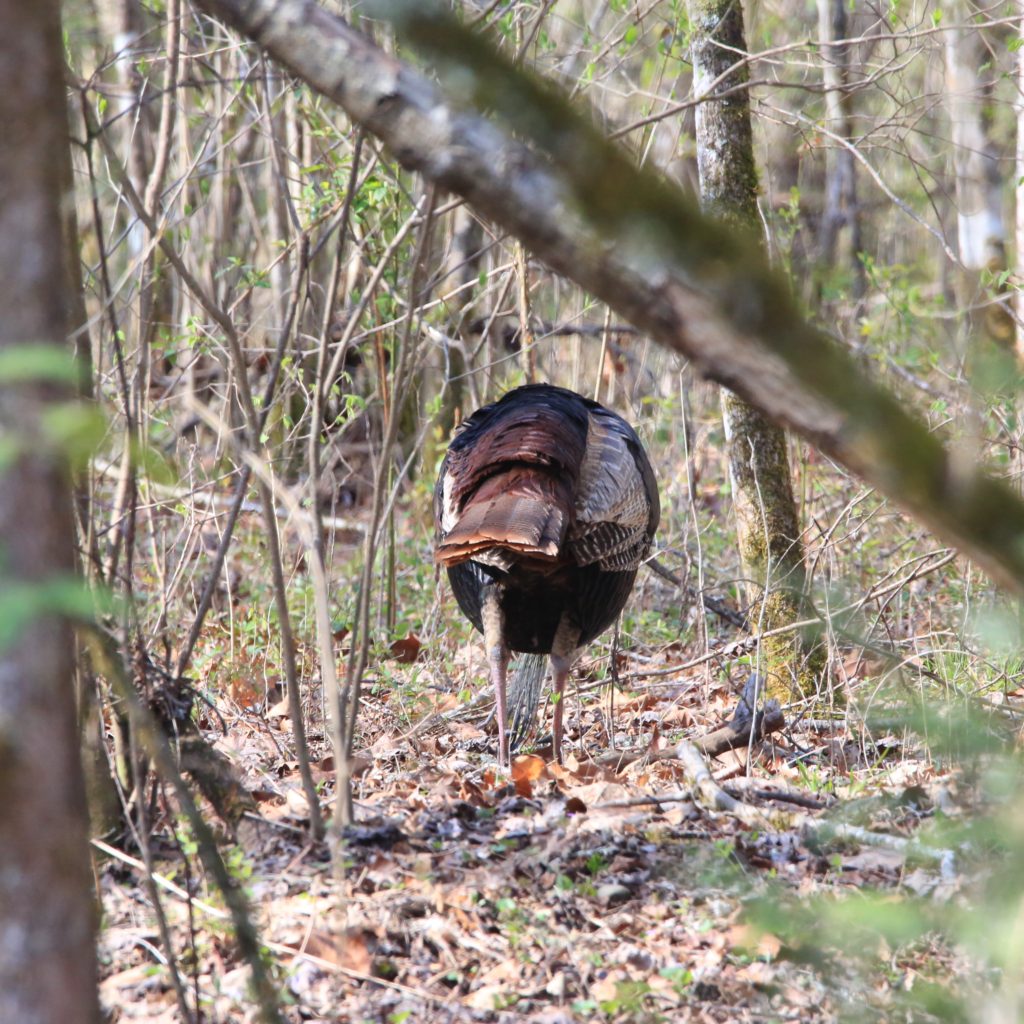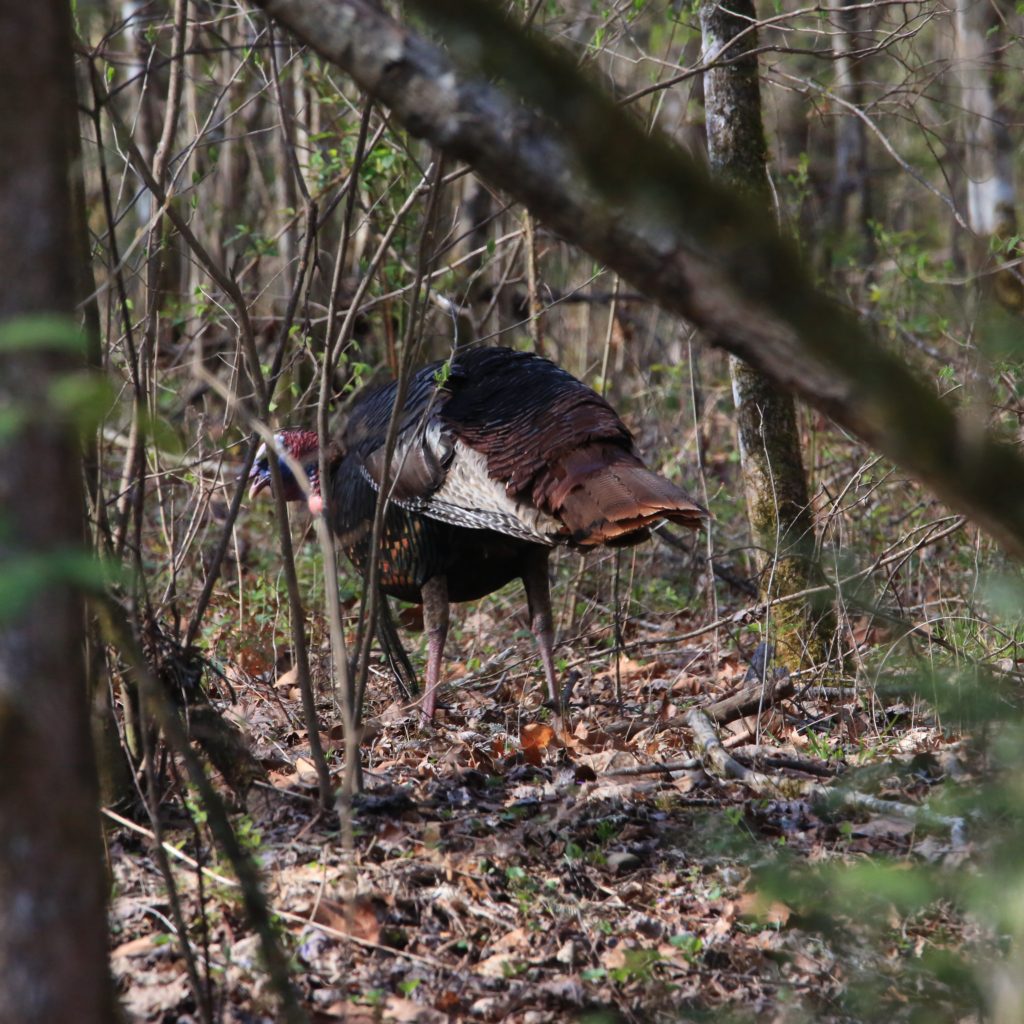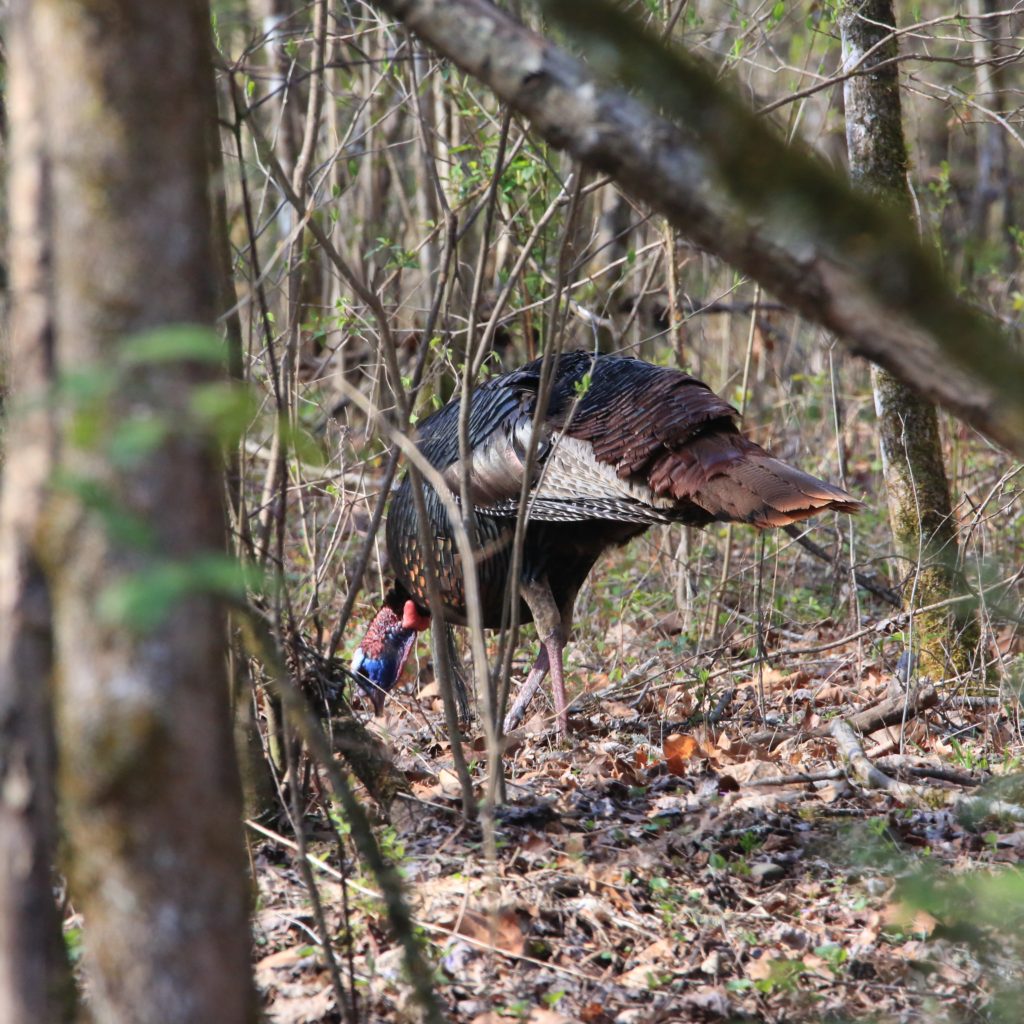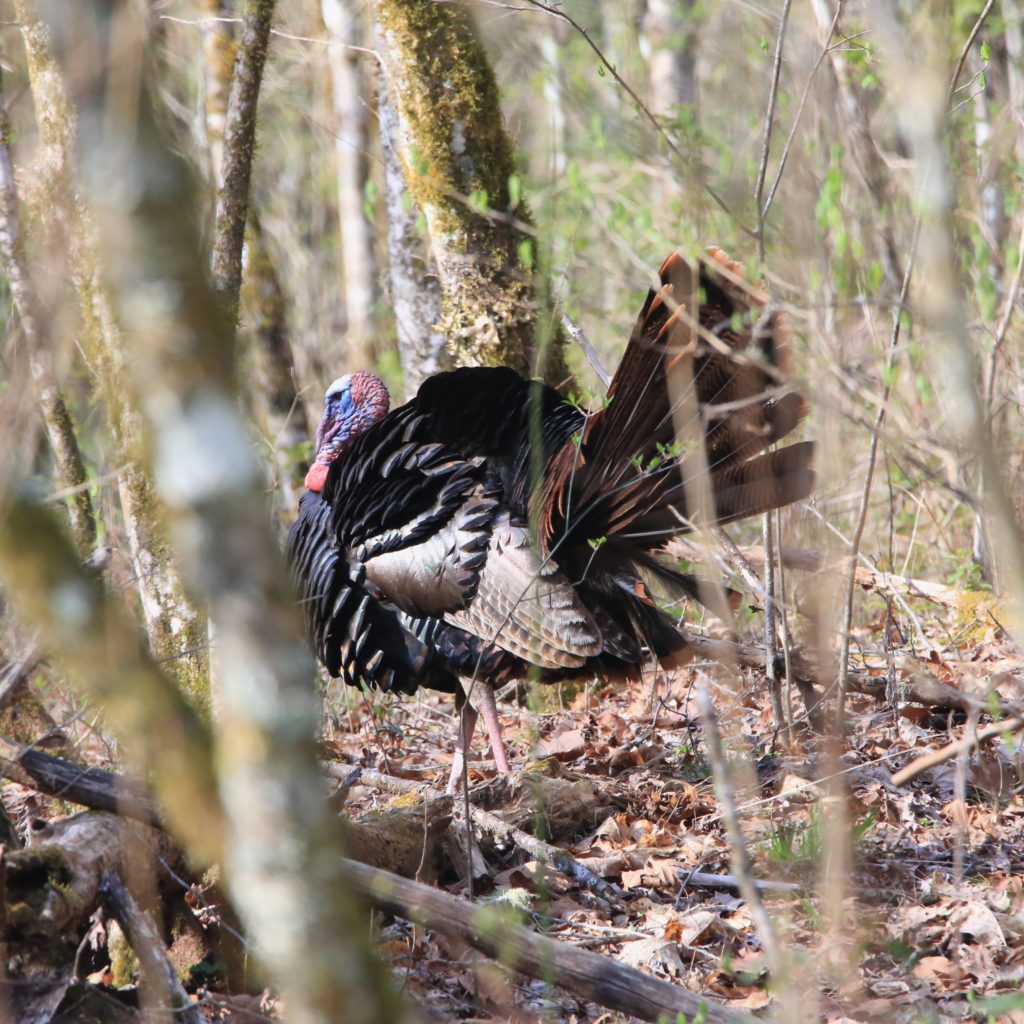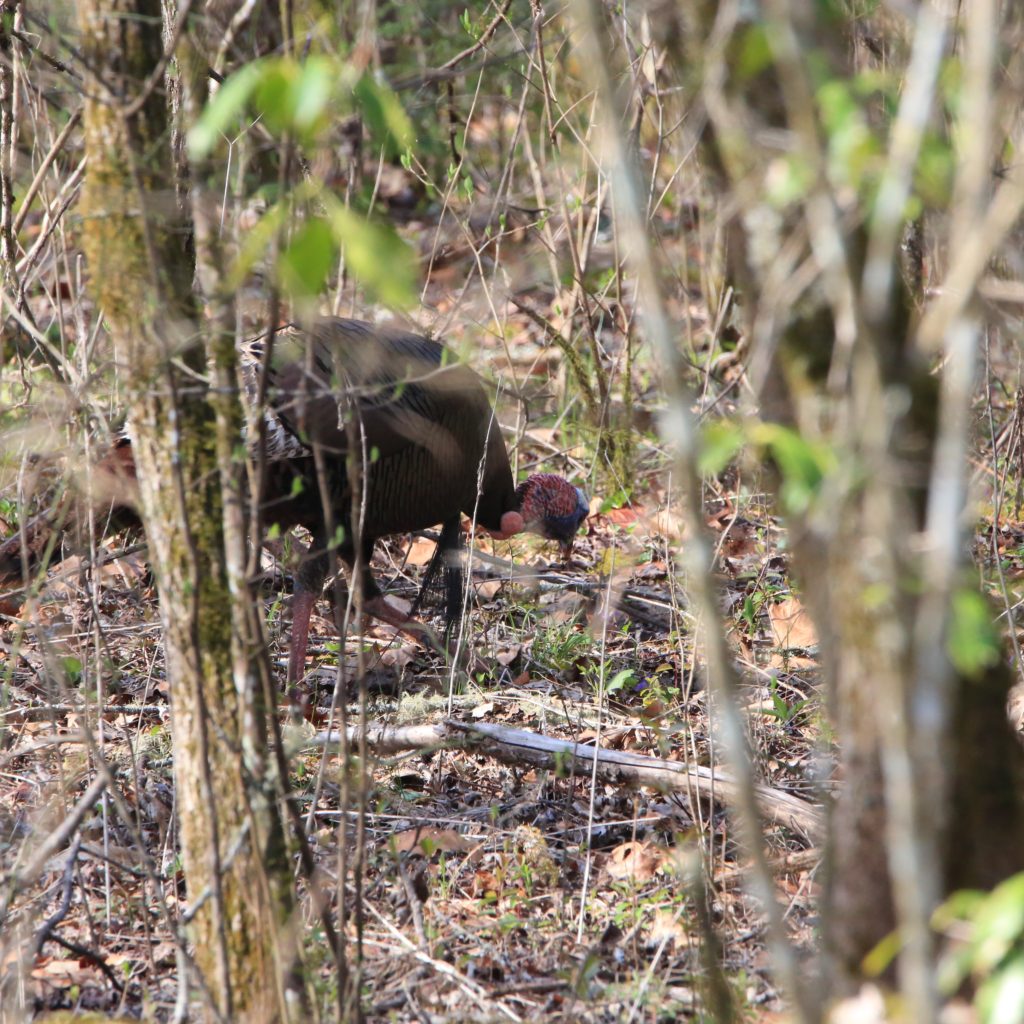
Wild Turkey
A Wild Turkey is a fun bird to see while bird watching. Below are some tips to help you identify Wild Turkeys. We have also put together a list of fun Wild Turkey t-shirts, Wild Turkey bird patches, bird houses, bird feeders, binoculars, stickers and other fun bird watching items.
About Wild Turkeys
The wild turkey is a common sight year-round in flocks around the woods and clearings. Males court the females by puffing themselves and gobbling endlessly. Males provide no care for their young and the female only cares for the young chicks until they are capable of finding their own food.
Wild Turkey Color Pattern
Turkeys are generally black with a bronze-green radiance. They have dark wings with shades of white. The tail feathers are broad and have rusty tips. The bare skin at its head and neck changes from red to blue to grey.
Description and Identification
Wild Turkeys are one of the most identifiable of North American bird species because of their unique look and the fact that they are the inspiration for Thanksgiving decorations and arts and crafts. Wild turkeys are large birds that strut around in forests and clearings like they own the place, and the males expand with air like a ball and gobble loudly when they are courting. Male heads are featherless, red and blue and covered in wattles. Females are also large with a long neck and legs, and they are dark brown in color with darker barring. Wild Turkeys roost in trees and only fly short distances.
Wild Turkey Size
The wild turkey is generally a large plump bird with wide rounded tails, long legs, and a small head. It measures as follows:
- Length 110 – 115 cm
- Weight 2500 -10800 g
- Wingspan 125 – 144 cm
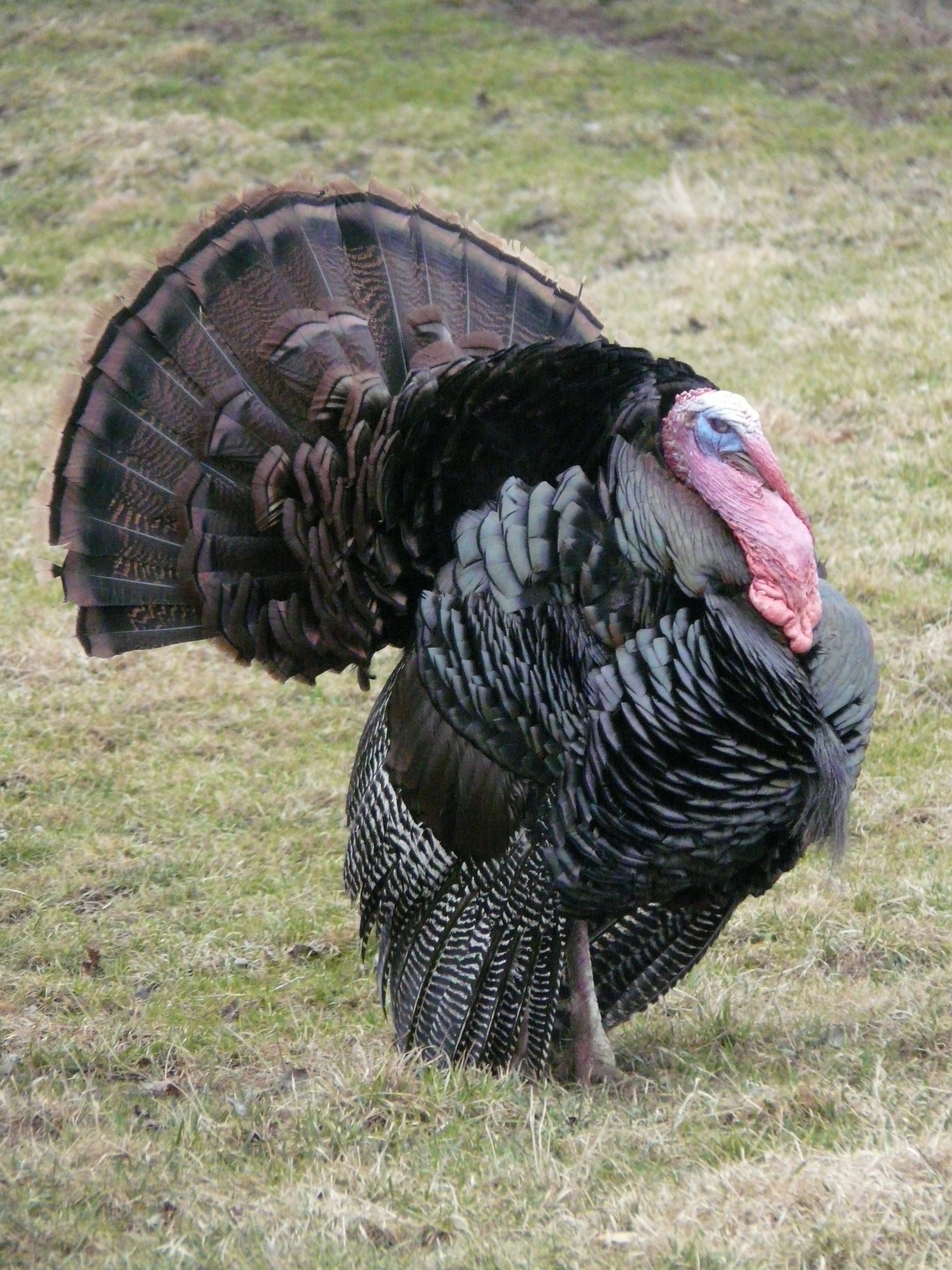
Wild Turkey Behavior
Turkeys are social birds traveling in flocks searching for nuts, berries, and snails. They scratch through litter using their long strong feet. Their breeding season falls during early spring where males gather in clearings to court females. At night the turkeys fly up to roost in groups up in the trees. Female turkeys tend to fly as the males run when faced with danger. Each sex has a pecking order and hierarchy. The males pecking order is constantly changing compared to the constant and stable female pecking order.
What Wild Turkey Eat
Wild Turkeys are foragers who eat mainly plants. They find food in flocks, but they also find their way into shrubs or low trees to find fruits. They look for acorns from red, white, chestnut, and black oaks, and they also eat American beechnuts, pecans, hickory nuts, white ash seeds, and wild black cherries. Wild Turkeys will happily consume other kinds of seeds and berries as well. Winter brings a change to their diets, and they’ll eat a variety of foods, such as burdock, club mosses, ferns with spores on their fronds, evergreen ferns, and hemlock buds. They are smart birds who dig up plant bulbs if they can’t find nuts in the spring, and they eat seeds from sedges and grasses in the summer. If plant material isn’t available, they will eat snails, salamanders, and ground beetles, as well as other insects. They sometimes eat lizards, frogs, snakes, spiders, and crabs, too.
They eat plants that they forage in flocks on the ground and also from the shrubs they climb in search of fruits. During winter, fall and early spring they forage for acorns and beechnuts. When snow covers the ground, they feed on hemlock buds and evergreen ferns.
Where Wild Turkeys Live and Habitat
You’ll find Wild Turkeys in a variety of habitats, depending on where they live on the continent, but they typically like some form of wooded area with clearings. For example, they live in forests in the mountains, woods, and wooded swamps. You might find them in mesquite grassland, chaparral, oak-hickory/pine-oak forests, and in cypress swamps. You’ll usually see them near oak trees because they love to eat acorns. A mix of woods and clearings is the best place to look for Wild Turkeys. You’ll find them living in open forests throughout the United States, in some areas of Mexico, and parts of southern Canada (southern Alberta, Ontario, Manitoba, Saskatchewan).
Wild turkeys are frequent residents of open forests with regular clearings which are most of the American states except Alaska.
Range and Migration
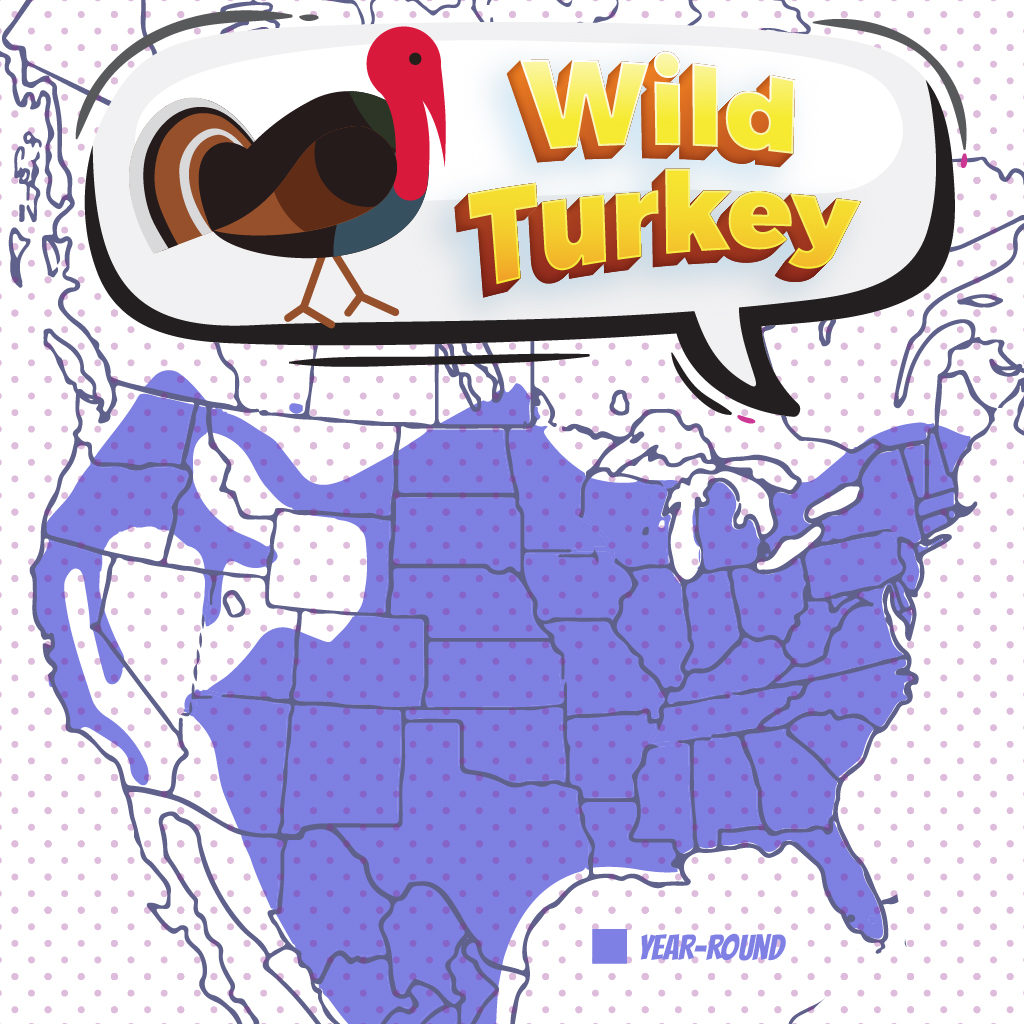
Wild Turkeys are present throughout North America, but you won’t find them so far north as Alaska and only in some southern parts of Canada. They extend south into a large part of Mexico, but they are not present near the coasts, typically. These large birds aren’t built for flying, so they tend to stick close to home. Migration is not their thing, but they may wander, especially during the autumn. Although they are present year-round in many parts of the United States, you won’t typically find them in western Wyoming, Nevada, parts of eastern California, or southwestern Arizona. There are parts of Montana, Idaho, Oregon, Washington, northeastern Minnesota, a small area of northern Wisconsin, and along the coasts of Texas and Louisiana where they are not present as well.
Wild Turkey Lifecycle
Females create a shallow hole in the soil and use dead leaves to create their nest. A female wild turkey lays a minimum of 4 eggs and a maximum of 17 eggs and incubating them for an average of 31 days and takes only one nestling day to be able to leave the nest and follow its female parent.
Nesting
Wild Turkeys aren’t big on flying, and their nests are at ground level near the bases of trees in dead leaves, underbrush/thick shrubbery, and you may find them in open hay fields. The nest is a shallow hole in the soil about an inch deep and nearly a foot wide. It’s about 9-13 inches long. They don’t search for nest material and instead use just what is available at the nesting site. Gobbling is the call that gets the females’ attention, and the males then show off their puffed-out feathers and spread-out tails, as well as their swelled face wattles and lowered wings as they strut around. A single male mates with more than one female.
Ornithology
Bird Watching Academy & Camp Subscription Boxes
At Bird Watching Academy & Camp we help kids, youth, and adults get excited and involved in bird watching. We have several monthly subscription boxes that you can subscribe to. Our monthly subscription boxes help kids, youth, and adults learn about birds, bird watching, and bird conservation.
Bird Watching Binoculars for Identifying Wild Turkeys
The most common types of bird watching binoculars for viewing Wild Turkeys are 8×21 binoculars and 10×42 binoculars. Bird Watching Academy & Camp sells really nice 8×21 binoculars and 10×42 binoculars. You can view and purchase them here.
Wild Turkey T-shirts
If you love the Wild Turkey you should purchase a Bird Watching Academy & Camp T-shirt. To help support bird conservation we donate 10 percent to bird conservation activities.
Wild Turkey Iron On Patches
Kids, Youth, and Adults love to collect our Bird Watching Academy & Camp iron on patches. Our bird watching patches help you keep track of the birds you have seen an identified. You can also display the patches on our Bird Watching Academy & Camp banners.
The Wild Turkey is a great iron on patch to start your collection with. The patches are durable and can be sewn on or ironed on to just about anything.
Wild Turkey Stickers
Stickers are a great way for you to display your love for bird watching and the Wild Turkey. We sell a monthly subscription sticker pack. The sticker packs have 12 bird stickers. These sticker packs will help your kids learn new birds every month.
Bird Feeders For Wild Turkey
There are many types of bird feeders. Here are our favorite bird feeders for your backyard. We use all of these bird feeders currently. Kids will have a great time watching birds eat at these bird feeders. Using this collection of bird feeders will provide a wide variety and many types of birds.
Best Bird Houses for Wild Turkey
There are many types of bird houses. Building a bird house is always fun but can be frustrating. These 4 bird houses have become our favorites. Getting a bird house for kids to watch birds grow is always fun. We spent a little extra money on these bird houses but they have been worth the higher price and look great.


